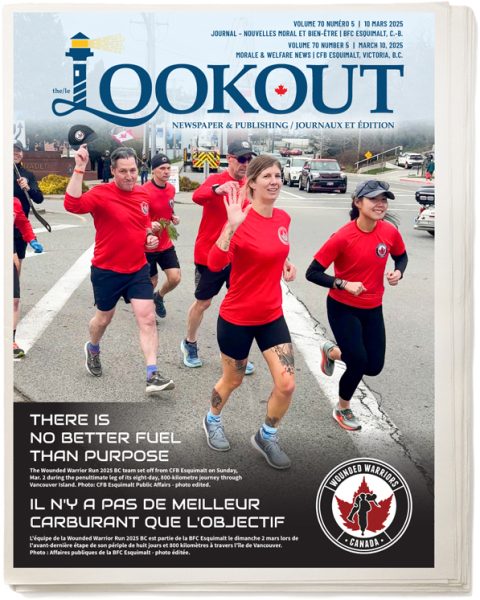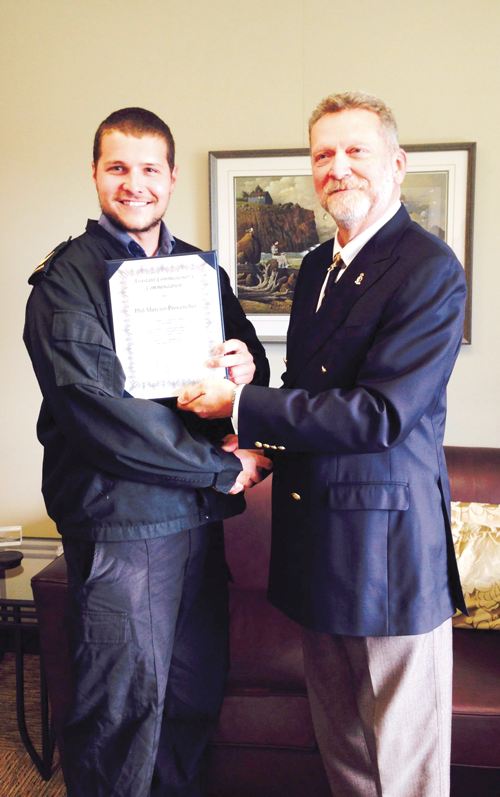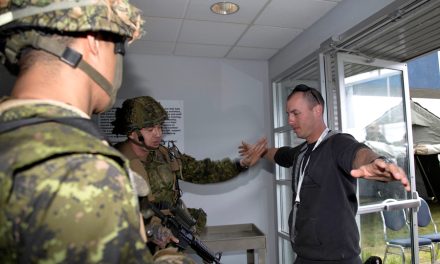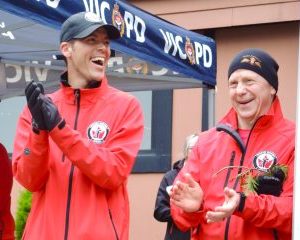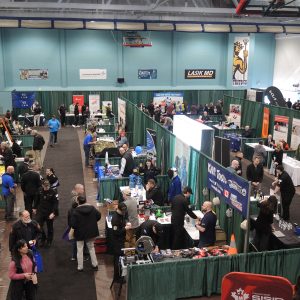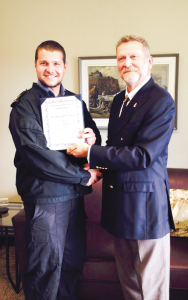
LS Philippe Mercier-Provencher received his Assistant Commissioner’s Challenge Coin from the Assistant Commissioner Roger Girouard on Sept. 8.
Three people, including a naval reservist, were honoured by the Coast Guard earlier this month for their role rescuing the lone survivor of a capsized commercial fishing boat off Tofino.
HMCS Radisson naval reservist LS Philippe Mercier-Provencher, Canadian Coast Guard Rescue Specialist Juan Burak-Yepez, and Coast Guard work experience student Adele Horbulyk were awarded the Challenge Coin of the Assistant Commissioner of the Canadian Coast Guard.
The three embarked on their mission during the early hours of Sunday, Sept. 6 amidst three metre swells and 20 knot winds after MV Caledonian listed when the crew hauled in a net, and eventually sunk in the offshore waters.
Three fishermen perished; one managed to climb aboard a life raft.
At the time, LS Mercier-Provencher was enlisted in the Inshore Rescue Boat (IRB) program at the Nootka Sound Coast Guard station, which provides rapid response to emergencies at sea.
The Joint Rescue Coordination Centre received a message at 10 p.m. on Sept. 5 stating a fishing vessel was overdue; it was working more than 28 nautical miles north-west of Nootka Sound.
With few vessels near the site and hours until a Coast Guard ship would arrive, LS Mercier-Provencher and his two colleagues were dispatched.
“Before we left I told the crew about the weather conditions, and asked them if they felt comfortable going ahead with the mission,” says Burak-Yepez.
“We agreed it needed to be done.”
After radioing for a weather forecast, Burak-Yepez was informed there were no impending gale warnings, meaning they could safely continue the search without having to return to shore.
The three boarded an in-shore rescue Zodiac, with an estimated time of arrival on scene of two hours; however, intense winds meant the rescuers had to cautiously navigate the swells at a slower than usual speed of 17 knots, meaning their journey took longer than anticipated.
“Under normal circumstances we would never have gone out on the water. But there was a life at stake, and we had to act,” says LS Mercier-Provencher.
At 12:30 a.m. the crew arrived at the position, but couldn’t find either a boat or survivors.
They carried out an expanded search movement, travelling in one mile straight lines and making 90 degree turns to form a square pattern.
A DND search and rescue aircraft was also dispatched to the vessel’s last known position.
The survivor heard the aircraft and fired a flare which the aircrew spotted.
The red flare was about three miles from the IRB crew.
When the flare petered out darkness enshrouded him.
“Luckily the survivor had one flare left. He lit it and when we spotted it. I told Philippe to go straight towards it,” said Burak-Yepez.
When it petered out, the crew used a heavy duty flashlight to scan the waves.
Minutes later, the light reflected the shiny material coating the outside of the life raft.
“We got close and saw a man in a life raft full of water waving frantically at us,” says Burak-Yepez.
Once they had the survivor on board, he could not stop hugging and thanking the crew.
“He knew he was lucky,” says Burak-Yepez.
“I think his perspective on life was changed a little bit after that.”
LS Mercier-Provencher quickly put his training to use by assisting the fisherman who was suffering from hypothermia.
“Our training and experience enabled us to respond without fear and administer first aid,” he says.
As the survivor’s hypothermia was being treated he explained to his rescuers what had happened to the MV Caledonian.
“He told us the boat had overturned around 3:30 p.m. that day, and he and the skipper had been forced to cling to the keel of the boat. At that point, he had lost track of where the other two crewmates had gone. After floating in the freezing ocean for five hours, he spotted the life raft, and swam towards it. He ended up spending another 2.5 hours in the raft,” says Burak-Yepez.
Burak-Yepez attributes the fisherman’s survival partly to the fact he was the only crew member wearing a life jacket.
Being found didn’t mean he was out of the danger.
He needed medical attention and the Coast Guard Station was too far away.
They radioed the Coast Guard, who provided them with coordinates of a cruise ship close by.
With the fisherman receiving medical attention on the cruise ship, the team headed for home.
However, they encountered one final challenge when one of their two engines died due to overheating, forcing them to limp back to the station at eight knots.
When the second engine died, they paddled through the waves to shore.
Later the next day the bodies of the three other crew members were recovered by the Canadian Coast Guard.
Rachel Lallouz
Staff Writer
